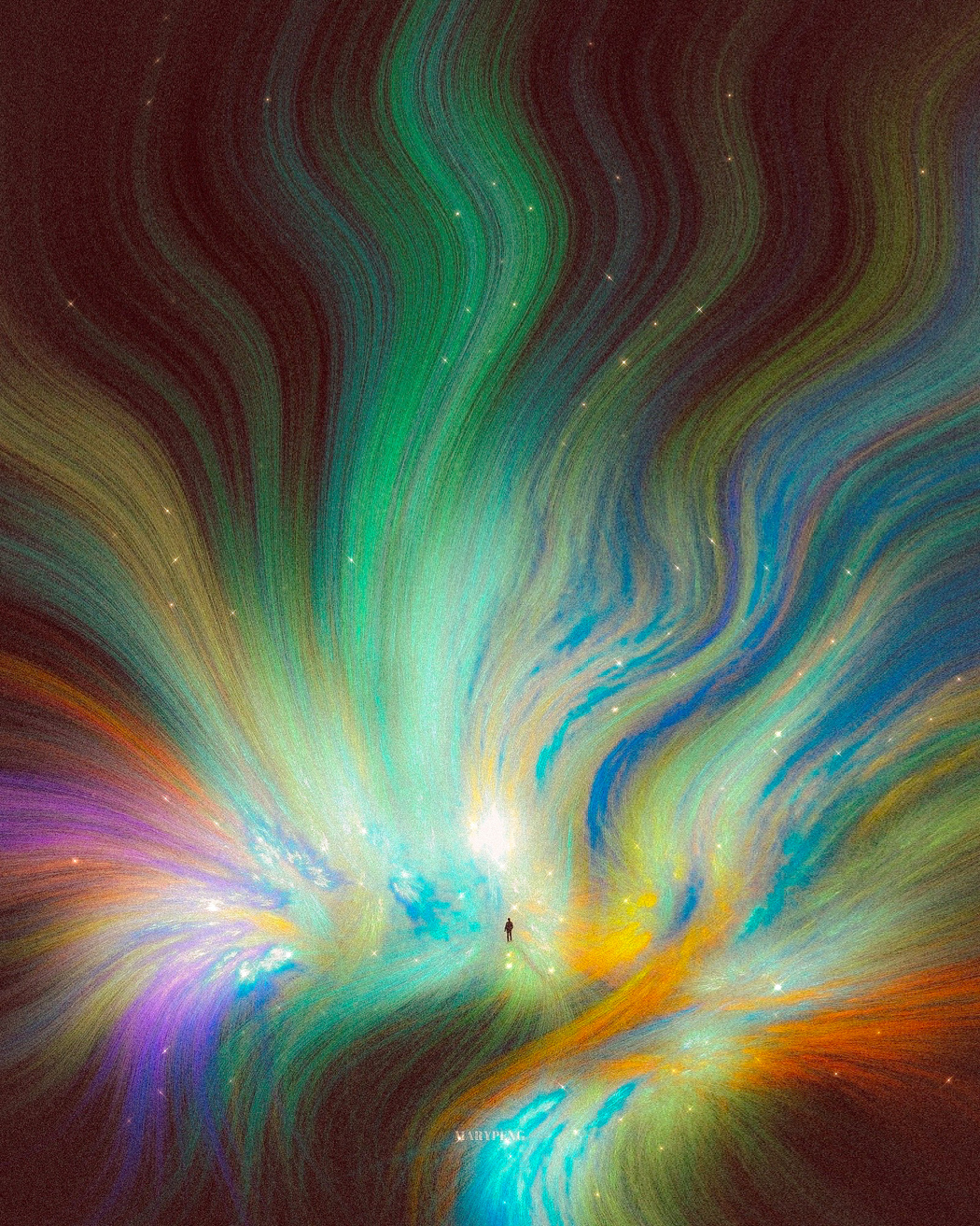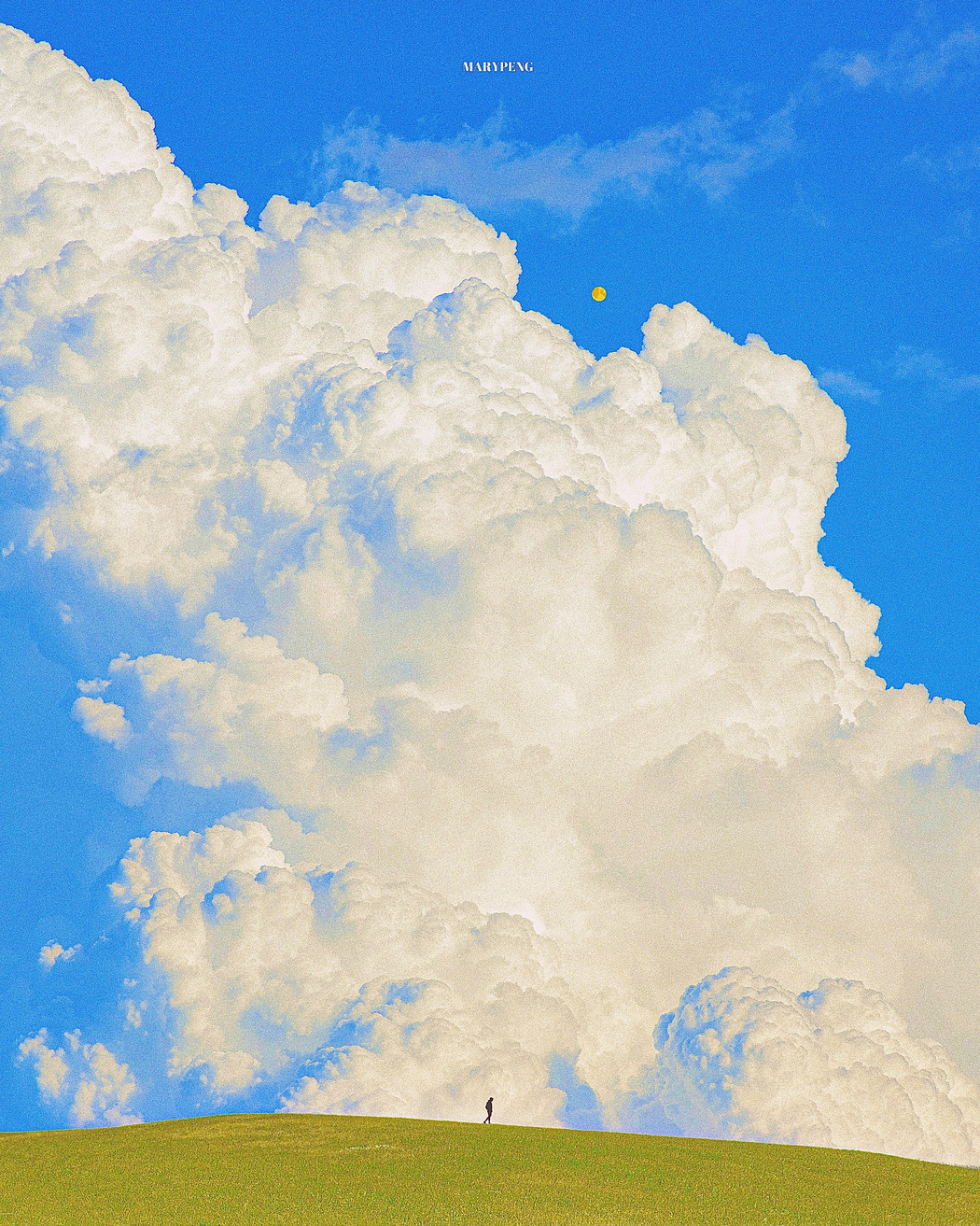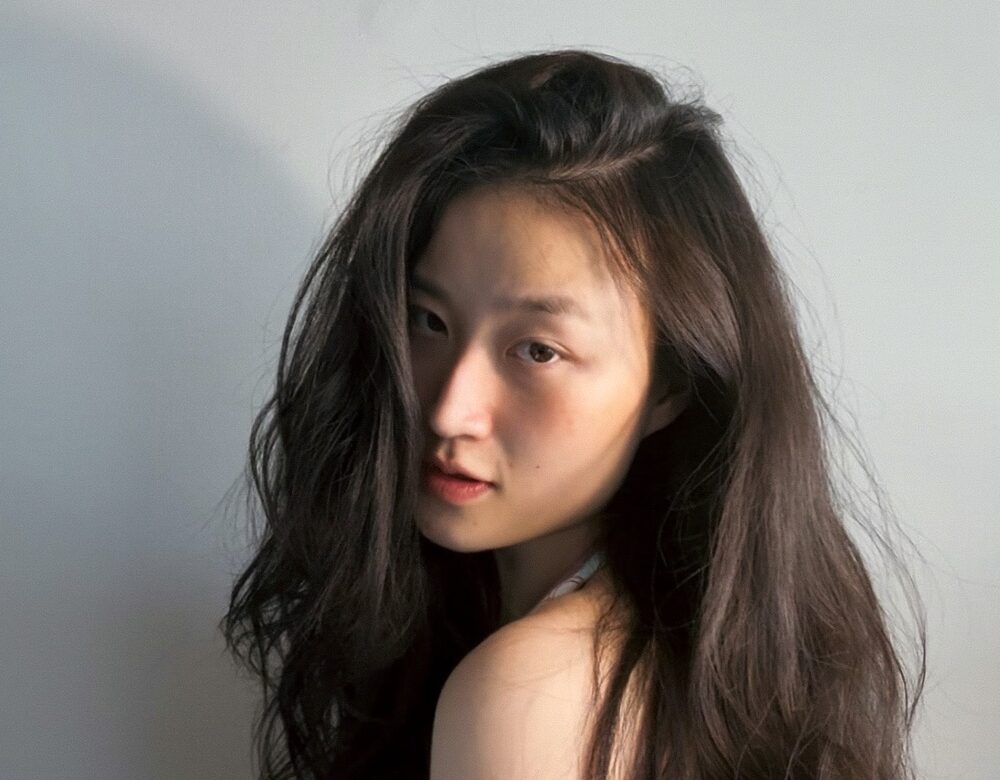Mary L. Peng
Year of birth: 1998.
Where do you live: Washington DC.
Your education: Master of Public Health, Yale University; Master of Science, Harvard Medical School; Bachelor of Arts (Global Studies, Philosophy, Anthropology), University of Virginia.
Describe your art in three words: Motion, Love, Reverence.
Your discipline: Multimedia, mixed-media.
Website | Instagram
Your work often explores the delicate boundaries between reality and illusion, as seen in your Dimension Chi Dreamscape Collages. Can you describe how you approach blending the abstract with the physical in your art?
In my creative practice, I often return to what Nikola Tesla said, “if you wish to understand the Universe think of energy, frequency, and vibration. Perhaps the abstract and the physical are not opposites but two resonant frequencies of the same reality. Making spatial compositions where dreams and familiar physical scenes cohabitate pays tribute to that thought. I find that approach soothing and exhilarating at the same time because it’s not about creating illusion for illusion’s sake, but about rendering an alternate way of sense-making and seeing that still feels viscerally real.
The Holographic Principle and Observer Effect are central to your Dimension Chi Dreamscapes. How do these theories influence your creative process?
I wouldn’t say they are central to every piece, but they have definitely been sources of inspirations. I often find quantum mechanics extremely poetic. My understanding of these theories is of course limited in many ways, but they led me to reflect on the participatory nature of perception. The observer effect broadly refers the phenomenon where the act of observing or measuring a system influences the system’s behavior. I try to approach my pieces as a kind of play with perception, where the act of how to look or where to look becomes a central part of the artwork itself.
The Holographic Principle—the idea that all the information in our three-dimensional universe could be encoded on a two-dimensional boundary, much like how a hologram contains a full 3D image—feels exhilarating to me. So I thought it might be fun to create compositions that visually show 3D spaces through “flatness”, particularly by collapsing the boundary between surface and depth. Interestingly, the online community whimsically dubbed one of my series “flat earth,” which I found hilarious and oddly genius. That unexpected nickname actually nudged me to dig deeper into the Holographic Principle and its philosophical implications. These concepts don’t serve as strict guides in my work, but they open imaginative paths that allow me to play with visual experiences that feel fluid.
 Mary L. Peng | I Wonder | 2021
Mary L. Peng | I Wonder | 2021
What does the interplay between nature, perception, mysticism, and the human body mean to you, and how do you translate that into your multimedia pieces?
This is probably one of the weightier questions in this interview. I can never claim I know how to fully answer this question, but I will try to share my understanding, one that I hope will constantly evolve, to the best of my ability here. To me, they share the kind of relationships that feel fundamental to why we should never cease to harbor humility towards nature and the universe at large. Nature births the body; the body attempts to make sense of nature, both physically and cognitively, through perception; perception is inevitably limited, leading to a body that is rarely able to comprehend its connection with nature to the fullest extent. As an individual, nature grounds me, perception refracts my reality, mysticism keeps things beautifully uncertain, and the body is where all of it becomes sensation and memory.
Some of the things that often come to mind in this regard include: “The sound of water says what I think” (Zhuangzi, a prominent Chinese Taoist philosopher who lived around the 4th century BCE during the Warring States period ); “Nature always wears the colors of the spirit” (Ralph Waldo Emerson, an American poet and philosopher who led the Transcendentalist movement in the mid-19th century); “The ability to perceive or think differently is more important than the knowledge gained” (David Bohm, an American scientist considered one of the most influential theoretical physicists of the 20th century, known for introducing unconventional ideas to quantum theory, neuropsychology, and the philosophy of mind). In my creative practice, I gravitate towards that atmospheric expression, which is perhaps my body’s way of honoring and grasping that something universal in our relationships with nature, perception, and our shared encounters with mystical thoughts.
You mention transcendentalism as a guiding philosophy in your art. How do the transcendentalist ideas of individualism and connection to nature shape your creative vision?
I believe in the inherent goodness of humanity, but also that within our experiences, we inevitably encounter the antithesis of that goodness. I feel most at ease when I’m in nature or in my imagination where I’m completely utterly overpoweringly immersed in nature or the outer space.
During my time studying abroad in college, I focused on 19th-century American and British literary encounters. I remember falling hopelessly in love with romanticist and transcendental poetry. At the risk of sounding insane, I felt such a live connection, a connection that felt alive, that felt saturated with the liveliest passion and excitement, with all the poets who of course had long since passed. That resonance, as I sat with it, perhaps came from a universal resonance that aligned with my perception of the world, our solitude and our oneness within it.
Rather than shaping my creative vision, I would say it grounds my creative goal. I create not to explain the world, but to stand still with it, in awe.
 Mary L. Peng | Echoes of the Sky | 2025
Mary L. Peng | Echoes of the Sky | 2025
In your Light Forms and Cartographers of Life collections, you explore animate and inanimate bodies in ethereal forms. What do you hope the viewer takes away from these abstract representations of life and nature?
I hope the viewer feels a sense of oneness with nature, with light, with other beings, and a sense of suspended time and fractured separation —a momentary dissolution of separation between themselves and all else. By abstracting bodies and nature into light frequencies, I try to think of it as my way of writing love letters to a way of seeing and feeling life, one that is not as fixed, but as porous, luminous, connected, and entangled.
How has your experience with digital platforms, such as Adobe Creative Cloud and Photoshop, influenced the way you approach and execute your collages and digital works?
I used to think precision would be the greatest gift that digital tools could offer me but then I realized it’s actually their fluidity that has fundamentally shaped my creative process, that “control Z” functionality and the myriad possibilities it creates. The simple existence of “Control Z” opens up a way of working that’s more experimental, forgiving, and playfully nonlinear—more like thinking in layers than executing in lines. In a way, it’s like how dreams work – where time and actions can be bent, undone, and reshaped without consequence. That dreamlike flexibility and fluidity is what digital tools have given my process: a space where revision becomes a form of discovery rather than correction.
As we’re talking, I’m suddenly realizing—maybe that’s why my pieces are called dreamscapes! It’s kind of hilarious and thrilling to think the “Control Z” key might be the architect of my entire digital aesthetic. Medium is the massage! The process mirrors the architecture of dreaming itself: fluid, nonlinear, layered, intuitive, and forgiving. “Dreamscapes” aren’t just about what the work looks like, but how it comes into being—through the same kind of malleable perception and sense-making that governs our inner cognition and dreams.
 Mary L. Peng | A Song of Eternity | 2023
Mary L. Peng | A Song of Eternity | 2023
Your paintings explore the embodiment of abandon and the liminal space between sensibility and intentionality. How do you balance emotional expression with the intentionality of your technique?
When it comes to interacting with physical paint, my process is rooted in my hope to surrender, surrendering to not knowing how I’ll get to that stopping point of completion or satisfaction, or whether I will ever get there at all. As for techniques, I don’t really have any set techniques to be honest I rarely use paintbrushes; I prefer to use my hands or whatever’s around me—scrap paper, paper towels, plastic bags, forks—anything that can help me create something that feels like motion. For me, there is no balance to be struck between expression and the intentionality of technique; there’s no separation between them — they’re one and the same.


Leave a Reply